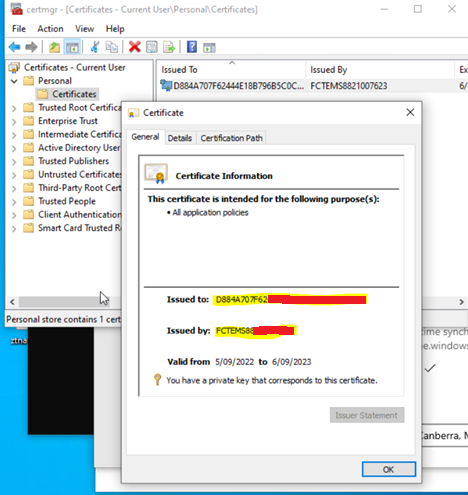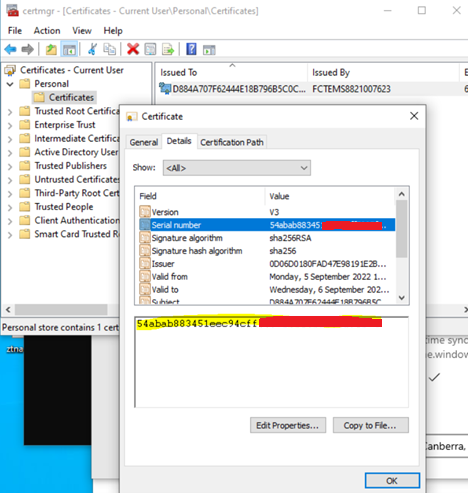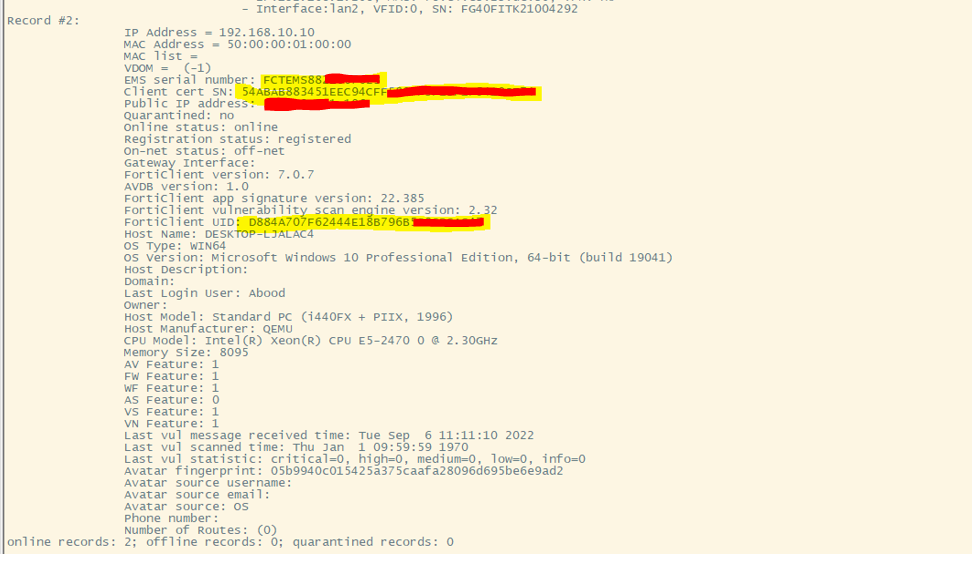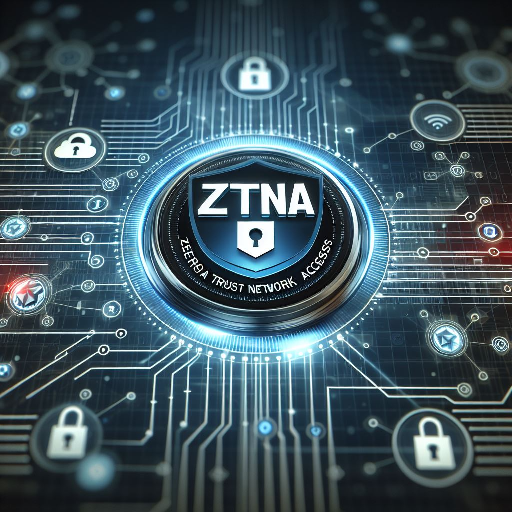Introduction
In this fifth installment of our Fortinet ZTNA series, we explore ZTNA certificate management and its role in securing client authentication and access control.
ZTNA Certificate Management
FortiClient EMS plays a central role in managing certificates for ZTNA authentication. Below are key points regarding ZTNA CA and certificate handling:
- FortiClient EMS has a default root CA certificate (default_ZTNARootCA), which is assigned to the default customer site. Each customer site, such as CUSTOMER-TEST, has a unique root CA.
- The ZTNA CA uses this root certificate to sign CSRs from FortiClient endpoints.
- Root CA updates and revocations automatically propagate to FortiGate and FortiClient endpoints, enforcing certificate renewal.
- FortiClient EMS manages individual client certificates, ensuring each endpoint is securely authenticated.
- Revoking a client certificate is necessary when private keys are compromised. This can be done in FortiClient EMS:
- Navigate to Endpoint > All Endpoints.
- Select the client and click Action > Revoke Client Certificate.
- Important: Do not confuse the FortiClient EMS ZTNA CA certificate with the SSL certificate:
- The ZTNA CA certificate is used for client authentication.
- The SSL certificate is used for FortiClient EMS HTTPS access and FortiGate fabric connectivity.

The certificate issued by EMS looks like the following at the endpoint certificate store.


Certificate Storage and Verification
- Windows Endpoints: FortiClient automatically installs the client certificate into the Windows certificate store.
- Certificate Attributes:
- The certificate UID and serial number (SN) should match the records on FortiClient EMS and FortiGate.
- FortiGate validates these attributes before granting access.
- Verification on FortiGate:
- Use the following CLI command to list endpoint records:
diagnose endpoint record list
- This command displays information such as client UID, certificate SN, and EMS certificate SN.
- If a mismatch or missing data occurs, client authentication may fail due to the inability to locate the corresponding endpoint entry.

SSL Certificate-Based Authentication
SSL certificates play a crucial role in client authentication. Below is the typical workflow:
- Client Registration:
- When an endpoint registers with FortiClient EMS, it obtains a client certificate.
- Certificate Signing Process:
- FortiClient automatically submits a CSR (Certificate Signing Request).
- FortiClient EMS signs the CSR and returns the client certificate.
- Certificate Storage:
- The certificate is stored in the OS certificate store for secure authentication.
- FortiGate and EMS Synchronization:
- Endpoint information (UID, SN) is synchronized between FortiGate and FortiClient EMS.
- Client Disconnects or Unregisters:
- The certificate is removed from the OS store.
- The certificate is revoked on FortiClient EMS.
- Client Reconnects:
- A new certificate is obtained when the client re-registers.
Client Authentication Process
By default, client certificate authentication is enabled on the FortiGate access proxy. The authentication process works as follows:
- When FortiGate receives an HTTPS request, the WAD process challenges the client to present its certificate.
- FortiGate validates the certificate using the following logic:
- If the client presents a valid certificate:
- FortiGate extracts the client UID and certificate SN.
- If these match an entry in FortiGate’s endpoint record, the client proceeds with ZTNA proxy rule processing.
- If they do not match, access is denied.
- If the client cancels authentication or submits an empty certificate:
- FortiGate processes the request based on the empty-cert-action setting:
- If empty-cert-action is set to accept, the client is allowed to continue ZTNA proxy rule processing.
- If empty-cert-action is set to block, the client is denied access.
- FortiGate processes the request based on the empty-cert-action setting:
- If the client presents a valid certificate:
Conclusion
ZTNA certificate management is fundamental to ensuring secure, certificate-based authentication in a Zero Trust environment. Proper handling of FortiClient EMS root CA, client certificates, and authentication workflows enhances security and prevents unauthorized access.
By implementing certificate-based ZTNA authentication, organizations can:
- Automate client certificate management through FortiClient EMS.
- Enhance endpoint security with seamless revocation and renewal processes.
- Ensure accurate authentication records between FortiGate and FortiClient EMS.
